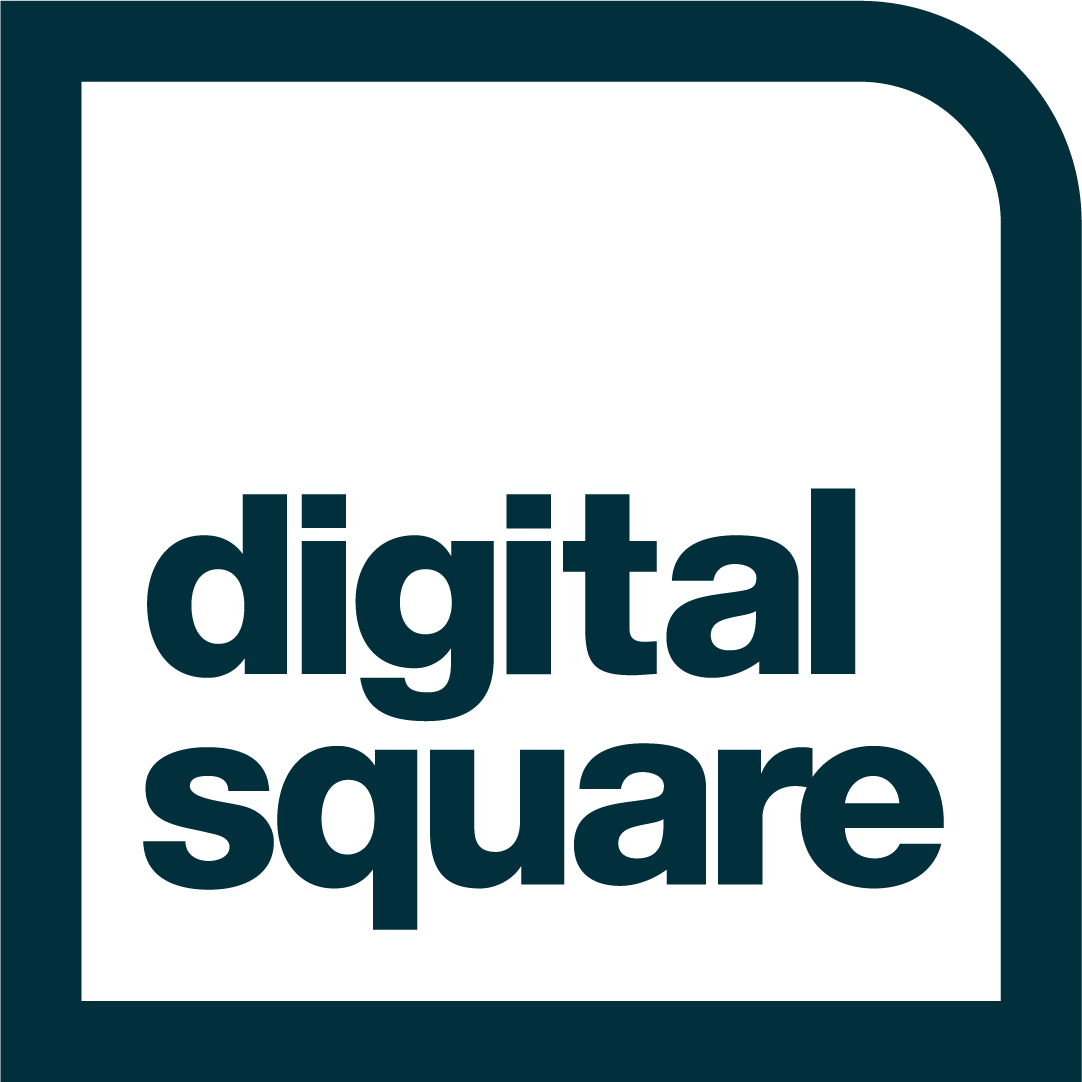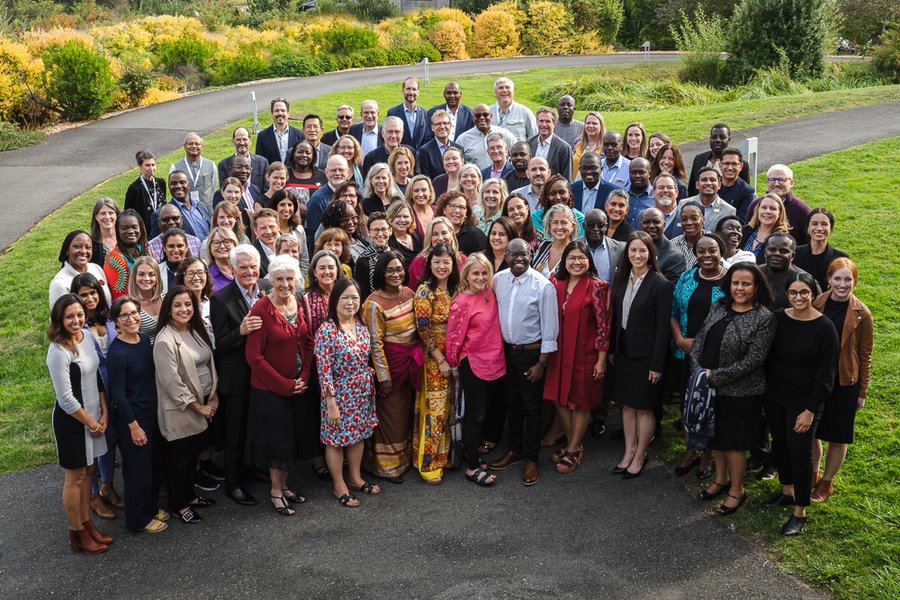Sustaining digital health through transformative governance: Digital Square’s emerging model
By: Skye Gilbert, Digital Square Executive Director and Laura Kallen, Digital Square Communications Officer
Digital Square’s board members as of September 2022.
Six years ago, something bold and innovative was needed to change how the global health community supports countries to embrace digital tools to solve health challenges. Digital Square at PATH was created in 2016 to tackle the historic lack of coordination in the digital health ecosystem, which had resulted in inefficiencies and market fragmentation. Available digital tools and investment mechanisms were not matched to the long-term needs of countries or communities. Digital Square was designed to help ensure that digital tools can help close—and not widen—the health equity gap around the world.
Today, Digital Square has become a well-known partner to countries, donors, and the ecosystem at large to support digital transformation—but we still see a need for change. As a global initiative, Digital Square is part of the global health sector’s status quo. However, we are positioned to work within existing systems and structures with the goal of helping to change the status quo. While we still have a long way to go, one way we are advocating for change is through our governance model. Governance encompasses decision rights, leadership structures, management processes, policies, procedures, and accountabilities that guide the pursuit of the initiative’s objectives. These structures provide an opportunity to redistribute power, influence, and representation.
In the interest of transparency, below we dive into a few questions about Digital Square’s governance, what we’ve learned, and how we are hoping to evolve.
1. Who currently decides what digital health solutions scale, and who should be making that decision?
Historically, digital health solutions in low- and middle-income countries scale when a funder supports the digital development and implementation cost. According to market analytics research, a standard collaboration has philanthropic funders cover capital expenditures, with the expectation that domestic government tax revenues will cover ongoing operation expenses. In this scenario, we typically see two approaches:
Philanthropic funders urge country governments to outsource technical decisions to experts, who are often housed at philanthropic organizations. The experts decide which solution scales and request country consensus. They then work with implementing partners to scale the solution on behalf of the government.
Country governments invest in upskilling their staff and recruiting digital talent, and at times they receive philanthropic support for these investments. The government then decides what scales. In some cases, they will outsource implementation to partners; in others, they will do it in house. They will request philanthropic support if they cannot afford their vision.
After assessing what has and has not been sustained with global goods implementations, Digital Square’s hypothesis is that the latter approach is more likely to lead to sustainable adoption of digital technologies. As a result, Digital Square is increasingly re-orienting its portfolio and partnerships with philanthropic and bilateral donors to support this approach rather than the former one.
2. Digital Square formed in 2016. How has Digital Square’s governance model evolved since then to help actualize a vision of shifting power, influence, and representation in global health? How does it need to continue to evolve?
The openness and inclusivity of Digital Square’s governing processes are central to its ability to foster better alignment and collaboration within the digital health marketplace to accelerate health equity through the development, adoption, scale, and delivery of digital health innovations. Digital Square’s governing processes aim to be transparent. Its governing bodies are meant to be representative of the global digital health ecosystem’s diverse stakeholders. Reflecting a commitment to agility and iteration, Digital Square updates its strategy on an annual basis and seeks community input each year before finalizing it. And, crucially, Digital Square supports a neutral and trusted digital health marketplace with no vested interest in a specific aspect of the market.
When Digital Square was first finding its footing, its Board lacked diversity. This was a big oversight for a global initiative and something we intentionally sought to remedy as we grew. Now, the Board is gender-balanced—5 out of 11 members are female-identifying—and its membership brings more diverse perspectives from lived experience outside of North America and Europe.
It is still a priority to further diversify the Board. We are actively seeking representation from country government leadership, academia, and multilateral agencies, as well as expanding the number of people of color on the Board. We have also learned that reaping the benefits of a more diverse Board requires process changes; in other words, it’s not just about who is in the room, but also about how we organize, structure, and facilitate sessions.
“It’s not just about who is in the room, but also about how we organize, structure, and facilitate sessions.”
3. Digital Square is housed at PATH. How does Digital Square govern within (or outside of) PATH’s structures? What are the pros and cons of this approach?
As a PATH-led initiative, Digital Square is governed by PATH’s Board of Directors. Organizationally, Digital Square is part of the Center of Digital and Data Excellence (CoDE). As CoDE’s largest initiative, Digital Square feeds into and supports CoDE’s overall vision to partner with countries and communities to achieve health equity through digital and data transformation. Digital Square is unique from other projects housed at PATH, however, in that we have a separate Board supporting our initiative.
A drawback that comes with this structure is that sometimes our operational and administrative processes—such as hiring or executing subawards—can be slowed down because we are sharing services with other programs across PATH. But this drawback is heavily outweighed by the numerous benefits of shared resources with PATH.
PATH’s Global Leaders Meeting in September 2022 brought together 92 PATH leaders and board members, representing 21 countries. Photo: PATH/Dave Simpson
Being housed at PATH allows Digital Square to leverage PATH’s operational rigor to manage investments, create unique and transparent ways of partnering, comply with donor rules and regulations, and manage subawards across dozens of partners and geographies. Digital Square also benefits from PATH’s resources and expertise, not only from our digital health experts across PATH, but also from experts across other health domains and country leaders with strong government relationships.
By leveraging PATH’s expertise and input from leaders in diverse geographies and health subject areas, Digital Square is better able to think outside the status quo for digital health. We are always asking and learning about how digital applications could be expanded or adapted to serve new, unanticipated, or previously unrecognized needs.
4. Digital Square promotes the adoption and reuse of digital health global goods. What is Digital Square’s governance model for global goods specifically, and how has it evolved over time?
Digital Square administers an inclusive digital health procurement process by allocating global goods investments transparently. Digital Square is not making investment decisions but rather has put in place a process for community-based decision-making. This has been one of our most unique, evolving, and lauded processes, shifting the perspective of how global goods’ resources are prioritized for funding across donors.
Key in our procurement process for global goods is the role of Digital Square’s Peer Review Committee (PRC), a group of technical expects from across the ecosystem who make technical and programmatic assessments of applications submitted to Digital Square. Digital Square’s Investment Review Committee (IRC) does their own review of applications, examines feedback from the PRC, and puts forward investment recommendations to the Board. Finally, the Board ratifies recommendations from the IRC and approves investment packages. We’ve learned that this model works well and is accepted by donors and the community, who value the transparency of the process.
For key areas of growth, we’re seeking to diversify both the PRC and IRC. For the PRC, we are targeting more female members and more participation from low- and middle-income countries to outweigh the heavy US- and Europe-based donor participation. Of the 31 currently approved PRC members:
7 are female-identifying and 24 are male-identifying.
12 are based in the United States, 13 are based in African countries, 4 are based in Asian countries, and 2 are based in Germany.
We are also trying to make our processes more inclusive by offering more resources, tools, and convenings in multiple languages.
For the IRC, we’d like to increase its size and representativeness of the digital health community. We continue to ask how we can increase the openness and transparency of the IRC while also protecting its independence.
5. Where can I go to learn more?
Learn more about Digital Square’s approach, partners and funders, and Board members on the Digital Square website or check out our Open Application Portal for global goods procurement. Reach out to us for feedback, questions, or ideas at digitalsquare@path.org.



